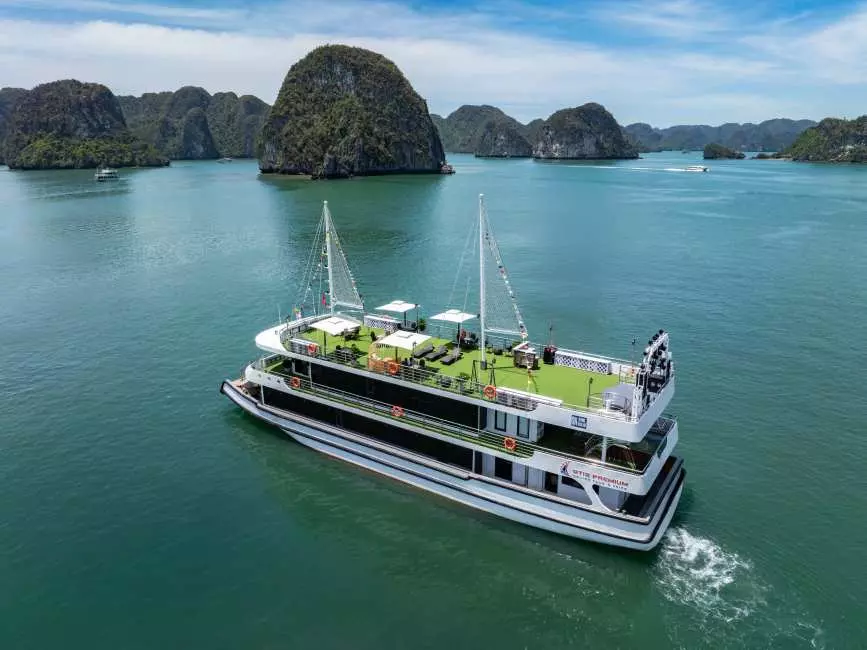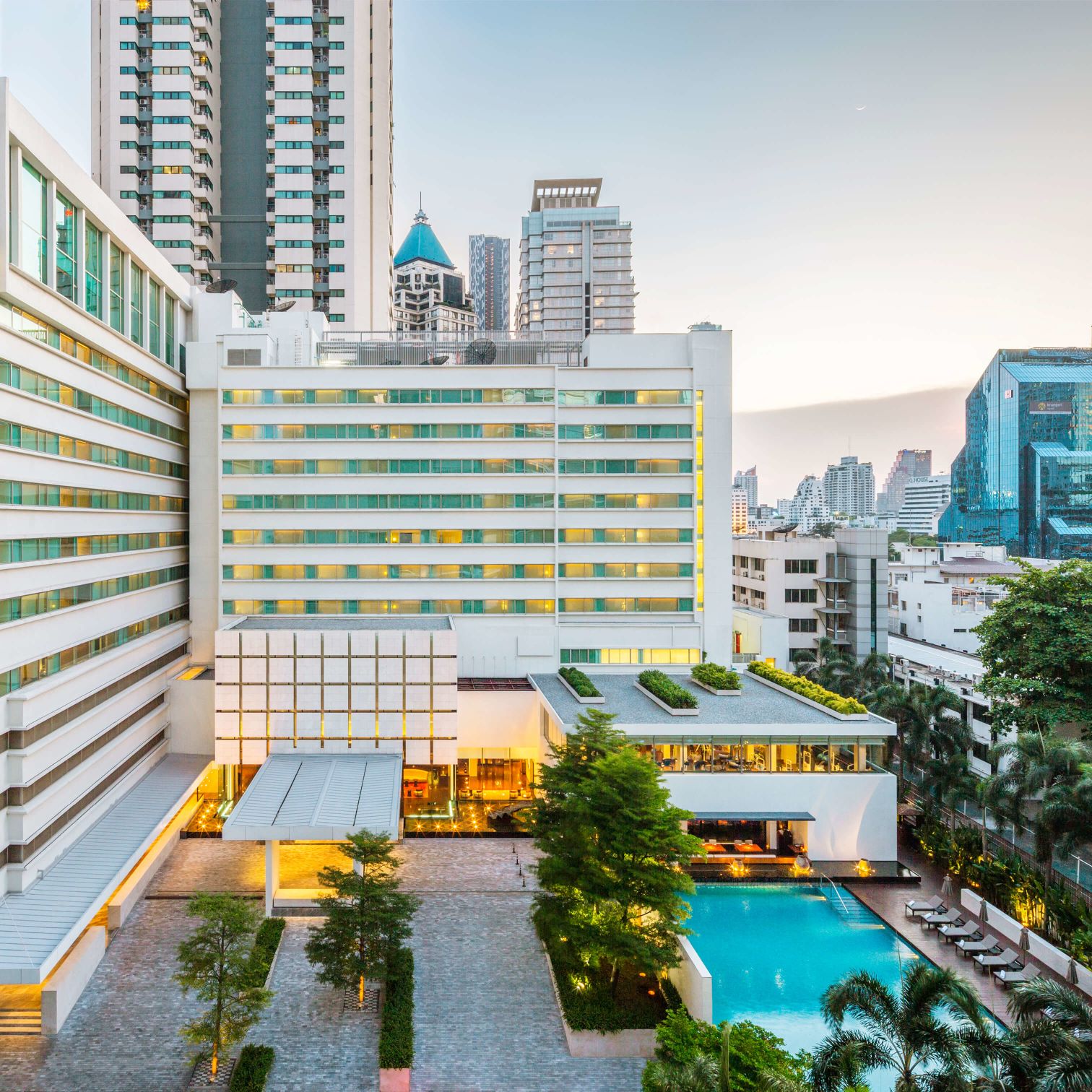Over the past decade, the aesthetic of Four Seasons has evolved to meet the needs of a new generation of guests. Under the helm of Dana Kalczak, Vice President of Design, it has moved from a more traditional design language of flower patterns and chintzes to a contemporary, clean-lined look that evokes a sense of serenity.
The catalyst for the shift: Four Seasons Hotel Tokyo at Marunouchi. Toronto-based firm Yabu Pushelberg eschewed excessive colour and pattern when designing the Hotel in 2002 and instead embraced Japanese minimalism. The clean sensibility of the rooms created a feeling of calm that resonated with travellers seeking home-away-from-home comfort.
In 2013, Yabu Pushelberg drew on that minimalism when it masterminded the look of Four Seasons Hotel Toronto. “The room was incredibly restful – rich in materials, quality and execution – but the neutral palette eliminated the chaos of pattern and colour,” Kalczak says. “That Hotel started us on a design journey to create the room of the future, something that spoke to all guest needs.”
The design team consulted scientific research to better understand how a guest feels in a room and used that information to design a thoughtful interpretation of luxury. The traditional rectangular desk was replaced by a round activity table with two chairs, a nod to the fact that most people work from laptops or iPads while lounging around their room.
A master light switch was placed by every bedside so that once in bed, a guest didn’t have to get up to turn off lights. Each guest room would feel like a sanctuary – a place to rest and recharge – while public spaces such as restaurants and bars would energize guests and encourage conversation.
To achieve that goal, the lobby bar at Four Seasons Resort and Residences Vail was moved from a hidden corner behind the concierge desk to the very centre of the lobby in the Hotel’s main entry. The move transformed a rarely used space to a social hub, not just for guests but also for the community. “This is a great example of how we deconstruct the formality of an older space and put fun front and centre,” Kalczak says.

The New Four Seasons Private Jet
Similarly, the new Four Seasons Private Jet, a custom-outfitted Airbus A321neo, will energize its 48 passengers with a standing social area where guests can connect with one another as well as a rotating crew of mixologists, chefs and other experts. On a flight from St. Petersburg to Paris, for example, a master sommelier can introduce guests to rare vintages from the regions on the itinerary.
The new design ethos is more minimal, but it’s far from cold and spare, and whether in a new build or a restoration, a high priority is a sense of place. Set atop the 1,121-foot Comcast Technology Center, the new Four Seasons Hotel Philadelphia at Comcast Center is now a fixture of the skyline.
Designed by Norman Foster of Foster + Partners, the Hotel reminds guests of the city’s long-standing reputation as a hub of art and ideas. Extending across the ceiling and up the stairs, artist Jenny Holzer’s For Philadelphia is a moving installation of nine electronic displays; the words of poets, architects, visionaries and children express the spirit of the city and flow colourfully throughout the space. In the vast atrium is the largest public art commission by British artist Conrad Shawcross, Exploded Paradigm, in which the artist explores the pyramid-shaped tetrahedron and its possibilities.

Four Seasons Private Residences Fort Lauderdale
Kalczak considers the forthcoming Fort Lauderdale and new Los Cabos properties, as well as the recently restored hotel in Athens, to be standard-bearers of the new design vision. Longtime Four Seasons interiors collaborator Meyer Davis was hired to bring Athens’ landmark Astir Palace back to its 1960s heyday. “We wanted exquisite beauty, and they delivered,” Kalczak says.
British designer Tara Bernerd was chosen to design Fort Lauderdale. “Tara knows how to engage the guest with beautiful yet surprising, quirky touches, while still hitting all the notes of functionality,” Kalczak says. The lobby, a coffee bar by day that becomes a bar in the evening, is the heart of the property. Since Fort Lauderdale is the yachting capital of the southern United States, Bernerd drew on nautical inspiration as a framework. This area is set to become Miami’s Riviera, she says. The design scheme for the building had to be timeless, so she harked back to an era of Chris-Craft Yachts and capri pants.
The new Four Seasons Resort Los Cabos at Costa Palmas feels like a natural extension of its surrounding landscape and respectfully reflects Mexican architectural tradition without using terracotta tile roofs and plaster walls. “All of the work draws from a distillation of the building culture – especially the materiality and integration of plantings and colour,” says Sarina Sanandaji of Guerin Glass Architects. Her team used geometry and texture to harness and frame the local landscape and the views of the sea and mountains, deliberately keeping the scale of the buildings small to better integrate with the topography and plantings.
The goal is to have the design enrich the travel experience. “We want every Four Seasons to be designed with intention,” Kalczak says, “anchored in place, comfortable for guests, effortlessly luxurious and seamlessly wired for the modern traveller.”
Your Journey Begins Here
Discover a new world of design.

The post Four Seasons By Design appeared first on Four Seasons Magazine.






